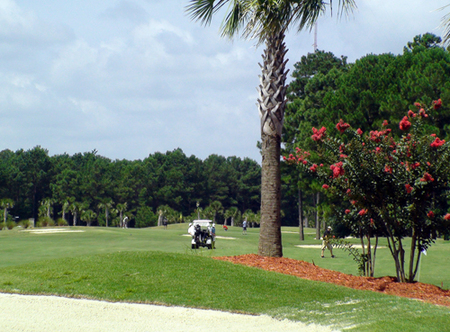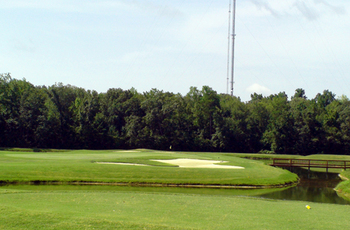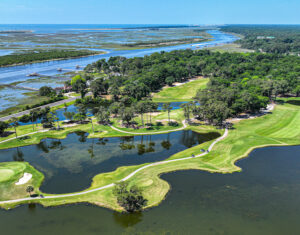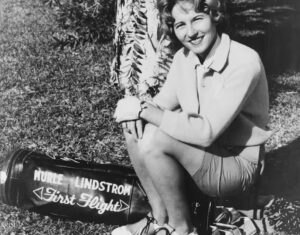Course Review: International Club Delivers Fast Greens, Good Service
When Jack Davis took ownership of the International Club in 2005, the first thing he did was order 365 palm trees and have them planted throughout the course. Davis bought the palm trees because he liked them, but the message it sent was clear: under his direction, International Club would strive to improve everyday.
More than four years later, evidence of Davis’ commitment are obvious throughout the property, and Myrtle Beach golfers are getting the message.
The clubhouse has been repainted and re-carpeted, and new trees, bushes and flowers have been seamlessly integrated into the property. With the addition of new tee boxes and a maintenance budget that has added to International Club’s aesthetic appeal and conditioning throughout the year, course improvements have been no less dramatic .
The result of that work is a course that earned 4 stars in Golf Digest’s most recent “Best Places to Play” guide and provides the type of quality and value that has helped make Myrtle Beach America’s most popular golf destination.
On the course, International’s defining characteristic are greens that are arguably as quick any on the Grand Strand.
“There is some undulation, though not as much as some courses have,” head pro Jamie Roderick said. “They are always on the quick side. In-season we will have them rolling close to a 12, which is extremely fast, and right now they are a 10.5 or 11.”
International’s greens are fast but fair. If a player can read a green and has good distance control, he or she can expect to putt reasonably well. With that in mind, spending a few minutes on the practice putting green is advisable.
While the speed and conditioning of the greens are impressive, putting yourself in position to have makeable putts is a crucial part of the equation and requires accuracy off the tee. International isn’t exceedingly narrow but players can’t spray the ball and expect to escape with no consequences either.
The course measures a relatively modest 6,857 yards from the tips and has water on 15 holes. Most players will tee off from the whites, which measure a challenging 6,367 yards.
“It’s not tricky,” Roderick said. “What you see is what you get, but if you can’t keep it inside the trees, you can struggle.”
The back nine is the tougher side on the Willard Byrd design, due in part to being nearly 150 yards longer.
For golfers that haven’t been to International Club in the last five years, it’s a changed facility.
“The returning players talk about what they saw (different) from last year to this year,” Roderick said. “That’s great. We are coming out of the box.”
Par 3s
The four par 3s at International don’t vary greatly in length, but each offers a different challenge. The first one-shotter, the 174-yard, 3rd hole, is also the easiest. Water is on the right but there is nothing in front of a large green. If you want to put a small number on the card, this is the hole to do it.
The 200-yard sixth hole is the most challenging par 3. Water runs almost all the way to the green and the bank in front pulls balls back into the water. There is no bailout room on the right and players that ditch on the left face the prospect of a putt that could be as long as 75 feet. A very good and very challenging hole.
The 11th is one of the prettiest holes on the course. Water surrounds the green on three sides and three bunkers provide great visual contrast. Players cross a wooden bridge to reach a large green located 180 yards from the tee.
The only par 3 that doesn’t feature water is the 192-yard 14th. The green, which is 40 yards deep, is surrounded by four bunkers. Pay special attention to pin placement and club selection because that last thing you want is a 50-foot putt.
Par 4s
As a whole, the par 4s comprise International’s most interesting holes. Only one of them measures more than 400 yards from the white tees but the challenge grows as the round wears on.
The 380-yard first hole is the easiest on the course, according to Roderick. The fairway is wide and the greens are generous, encouraging aggressive play.
A dogleg right, the second is among Roderick’s favorites. Discretion is typically the better of valor on the 398-yard hole, but either way, it’s interesting. The 334-yard (from the white tees) fourth is the shortest par 4. The length of the hole makes it vulnerable, but the fourth features a tree-lined fairway and a large pond on the right.
The seventh is the longest front nine par 4, playing 410 yards from the tips. Water is on the left and the fairway runs that way. Take a deep breath and make sure you hit the ball to the right side of the fairway.
The back nine is the longer side, and that’s reflected in three par 4s that play at least 393 yards from the white tees, led by the course’s toughest hole, No. 15. Playing from an elevated tee box, No. 15 measures 436 yards from the tips (406 from the whites), and the fairway is narrow, a fact compounded by water on both sides. Try to avoid a big number and get to 16 as quickly as possible.
The 418-yard, 13th hole isn’t much easier, requiring a drive over wetlands. Finding the fairway, preferably the left side of it, is a must because the green is surrounded by three bunkers.
The easiest par 4 on the back is the 400-yard (364 from the whites) 16th. Water is a factor on the left but if your drive finds the right side of the fairway, an inviting target awaits.
Par 5s
After challenging players with the par 4s, Byrd offers a couple chances to pick up strokes on the par 5s.
The 532-yard fifth hole gives players an opportunity to go for the green in two. There is a small pond in front of the tee, but if it comes in play you have bigger problems than merely losing a ball. Rip the driver but any chance at eagle is dependent on hitting the fairway. Balls that find the rough, will offer a decent shot at birdie for those who can execute from inside 100 yards.
No. 9 is the rare par 5 where players must consider not hitting driver. The hole measures just 512 yards from the tips and long drivers can actually hit the ball OB. If you take a 3-wood off the tee and play percentage golf, par or even birdie are real possibilities.
The easiest par 5 is the 487-yard 12th. Players must carry about 185 yards of water off the tee but the fairway is large and penalty for being in the rough isn’t severe. A long drive leaves players with a mid-iron on the second shot. This is definitely a birdie hole.
No. 18 is an ideal way to finish a round. The hole doglegs left and water is on the right side. Even long drives leave 230 to 240 yards to a green protected by a host of bunkers with woods lurking nearby. The 18th is a pleasing end to a good round of golf.
The Verdict: International is a fun course to play. It’s in excellent condition, the greens are as fast as any and the course offers the opportunity to post a decent number without being a pushover. International isn’t among Golf Digest’s 100 Greatest Public Courses, but it’s a facility that gets better every year. If you are looking for good golf and good value, you owe it to yourself to checkout International Club.





